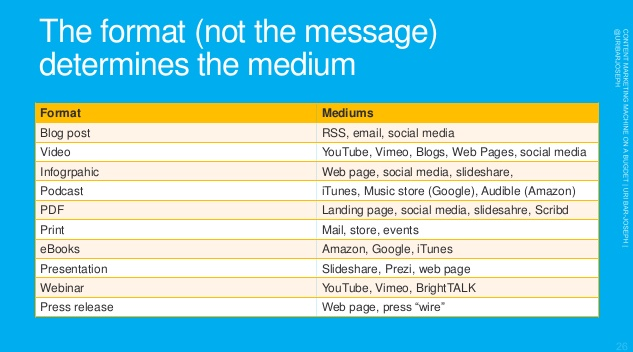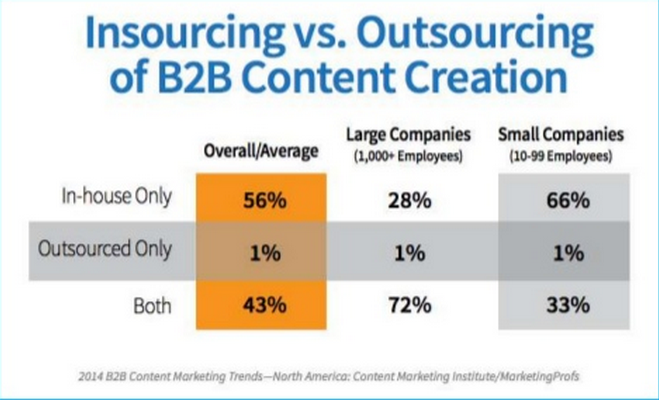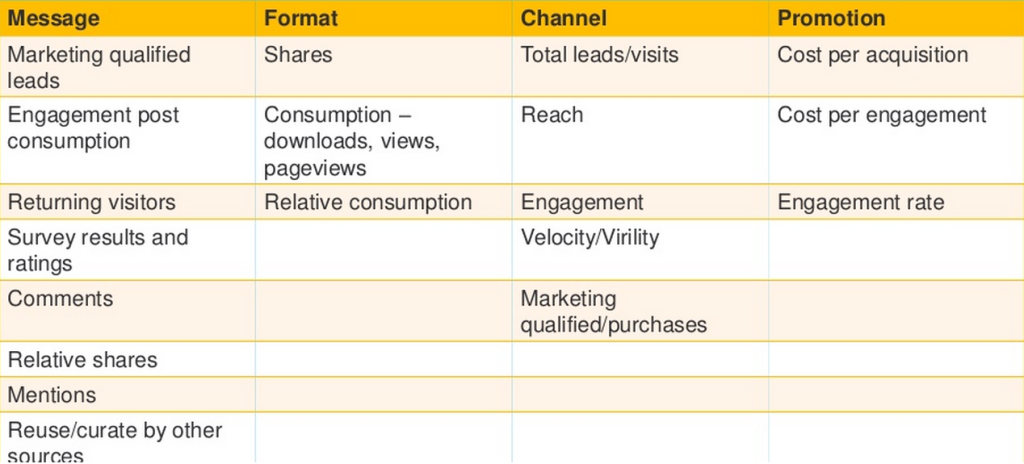Presentation by Uri Bar-Joseph
Seattle Search Network August Meeting Notes
“Content is King” – as Search Marketers, we’ve heard this ad nauseam in recent years, but what does it really look like and how can small businesses leverage content marketing the right way to achieve the best ROI?
At our August monthly meeting, Seattle Search Network was lucky to have Uri Bar-Joseph, the Director of Marketing at Simply Measured give us a very detailed overview of what content marketing is and why every business should consider doing it. Unlike other content marketing presentations I’ve seen, his went past the vague clichés that we’ve all gotten sick of hearing and instead dove right in to actionable things businesses of any size can do to improve their traffic, brand awareness, and their overall internet presence using content marketing as a real strategy.
I found myself feverishly taking down notes and I’ve combined them below with some screenshots from his deck in to this blog post to help pass on this knowledge. For no nonsense advice on content marketing make sure to also check out Uri’s blog and follow him on twitter.
Why Content Marketing?
http://www.eloqua.com/content/dam/eloqua/Downloads/ebook/Kapost-Eloqua_ebook_Content_Marketing.pdf
- According to an Eloqua study, after around 20 months, if you continue on with content marketing, the ROI is very significant –> 3 times that of Paid Search in many cases.
- Own vs. Rent your traffic.
- Once you’ve built your audience, your ROI goes up since you no longer have to pay “rent” the traffic and if you do paid advertising too, you get more and cheaper paid clicks.
- 93% of research starts with content and SEO
- 42% of consumers look for blogs before they buy.
- 57% of consumers say blogs had more of an impact than other media when making their purchasing decision.
What’s Challenging about content marketing for Companies?
Whether B2B or B2C, most companies cite the same hurdles for implementing effective content marketing:
- Lack of time (according to Uri –> not an excuse – symptom of bad priorities.)
- Producing enough content
- Producing the kind of content that engages
- Producing a variety of content
- Lack of budget
- Inability to measure effectiveness
How you need to think about content marketing
It’s not just about the message, you must also think about how you format that content so you can effectively leverage each channel from promotion of the content.
Start with your buyers:
- Who are they? –> demographic, firmographic
- Where are they? –> location, online, networks, subscriptions
- What are they interested in? –> topics hobbies, activities
- What is their pain? –functional, financial, emotional
- How can you help them? –>one product
Decide on ONE product
- Why do they buy?
- Why would they buy from you?
- If they bought from you would they be happy?
Define your buyer’s journey
- Every stage requires different content.
- awareness, interest, consideration, decision/purchase
- Awareness – Educate on problem
- Interest – Learn about possible solutions
- Consideration – Narrow solutions to a short list of alternatives
- Decision/purchase – compare shortlist and come to solution
- Your goals need to align with buyer’s goals at each stage.
Understand better what your buyers are most interested in by writing down and answering every possible question a buyer may have and the corresponding answer. Think of it almost like creating an FAQ. Use Ubersuggest to uncover questions you may not have considered.
Write down all the questions your buyers have at each stage
- List as many questions as you can for each stage and then answer each of those.
How to do it on a budget?
- Do it yourself
- Do it in-house
- Freelance or an agency
- Crowdsource – Do your research. What do you need?
- Brafton
- Writers Access – http://writeraccess.com
- Newscred
- Scripted
- TextBroker
- Zerys
- Curata
- Etc…
Plan one Canonical Piece of content
- Goal is to get it shared and noticed. Content is not gated
- Then create a peripheral content that supports and points to it:
Optimize the page for appropriate type of conversion based on stage the buyer is in.
- Add CTA, forms, big buttons, pop ups.
- Try different things and test to achieve max conversions.
Diversify formats
- Slideshare
- Video
- Podcast
- Blog article
- White paper
- Infographic
How do you do this on a budget?
- Do it yourself:
- Word
- Powerpoint
- Adobe
- Iphone, Camtasia
- Recording tools
- Do it in house:
- Designer
- Writer / copy editor
- Videographer
- Uncover talent within workforce.
- Freelance or an agency
- Crowdsource
Channel & Distribution
How to do it on a budget:
- Manage all your subscriptions in one place
- Assign owners to each channel/medium
- Have a content distribution checklist
Format determines the medium
- Make sure you can push out content and that you have budget to do it right or you’re not getting
Tips:
- Plan your promotions campaigns in advance
- Set goals, budgets, action items.
- Track and measure
- Establish baseline and then optimize
- Play around with it.
How to Get this Done
Even with great guidance from a Marketing Professional like Uri Bar-Joseph, content marketing doesn’t work unless you get busy and do the work.
As Uri mentioned at the beginning of his presentation, why pay for expensive PPC to rent your position and your relationship with certain terms when you can have people look for you directly?
Step 1: Make content marketing a priority.
- Decide that it’s important for your business
- Commit to it regardless of what you come up against.
- Don’t do it half assed
- Assign real resources to it
- Schedule time
- Block time out. Turn off distractions.
- Lead by example – upper management and key people should be involved in this.
Step 2: Plan It
- Pick one topic to start with
- Brainstorm
- Prioritize
- Find the experts –> extract knowledge from the right people.
- Create an editorial calendar based on what you come up with.
Step 3: Build a Process
- Brainstorm
- Finalize a topic
- Outline all formats
- Outline the message (creative brief)
- Copy and wireframe
- Helps communicate your process to more people
- Powerpoint is good tool for wireframing
- Review
- Final Draft
- Copy editor
- Production
- Review
- Polish
- Final Review
- Promo asset production
- Publish
Step 4: Assign Resources
- Internal? Outsource?
http://contentmarketinginstitute.com/2013/10/2014-b2b-content-marketing-research/
http://contentmarketinginstitute.com/2013/10/2014-b2b-content-marketing-research/
- Agency? Freelance?
Step 5: Manage Process
- Google Docs
- Trello
- Excel
- Smartsheet
- Kapost
Step 6: Execute
- Start Producing
- Think about distribution
- Have a Project Manager
Step 7: Measure
More Tips
- Define activity goals for the first 3-6 months
- Measure early indicator
- Start to measure real results only after 3 months of solid activity.
- Books – Taking online content and branding as a book builds legitimacy of brand and authority for the author.
- Capture target market as early as possible so you can influence them the whole way down the buyer’s journey.
Questions from the Group
Zach – How do you stay motivated if you’re not getting traffic or shares, etc?
- Keep going regardless for first 6 months.
- If you had solid activity and not seeing results, analyze why. Test, look at format, messge, promotion. Channels
- Why isn’t it working?? – Dig deep.
Brian – How do you do market research when you don’t have the money to do it?
- Start with a clear definition of who your buyer is.
- Validate through data. Use technology
Alex – What’s an average budget for content marketing?
- Small business – $11,000 per month
- Larger business – $18 – $30,000
John – What tools do you use to uncover your audience?
- Social Media – Listening tools, simple searches on Twitter, Autosuggest.
- Survey Monkey – Will go out and find target market and ask them your specific questions.
- Start with owners of business
- Think about format for your audience – mobile is huge in 3rd world and it’s very important to optimize for it.
Zach – Used interviews and dictation software to generate software, what else is there?
- Really likes using this type of strategy
- Shadowing key people and then interviewing about your experience.
Take content, edit, and then produce.
Alex – How do you convince a client to try content marketing when it is slow to get ramped up?
- Set expectations
- Generate content specific for leads a couple times. Top 10 lists, highly search topics, etc.
- Takes time to build authority. Not as many shortcuts now. Need to educate business owners and need to garner their trust.
Did you come to the event? What did you think? Leave your comments and additional contributions on this topic below.









